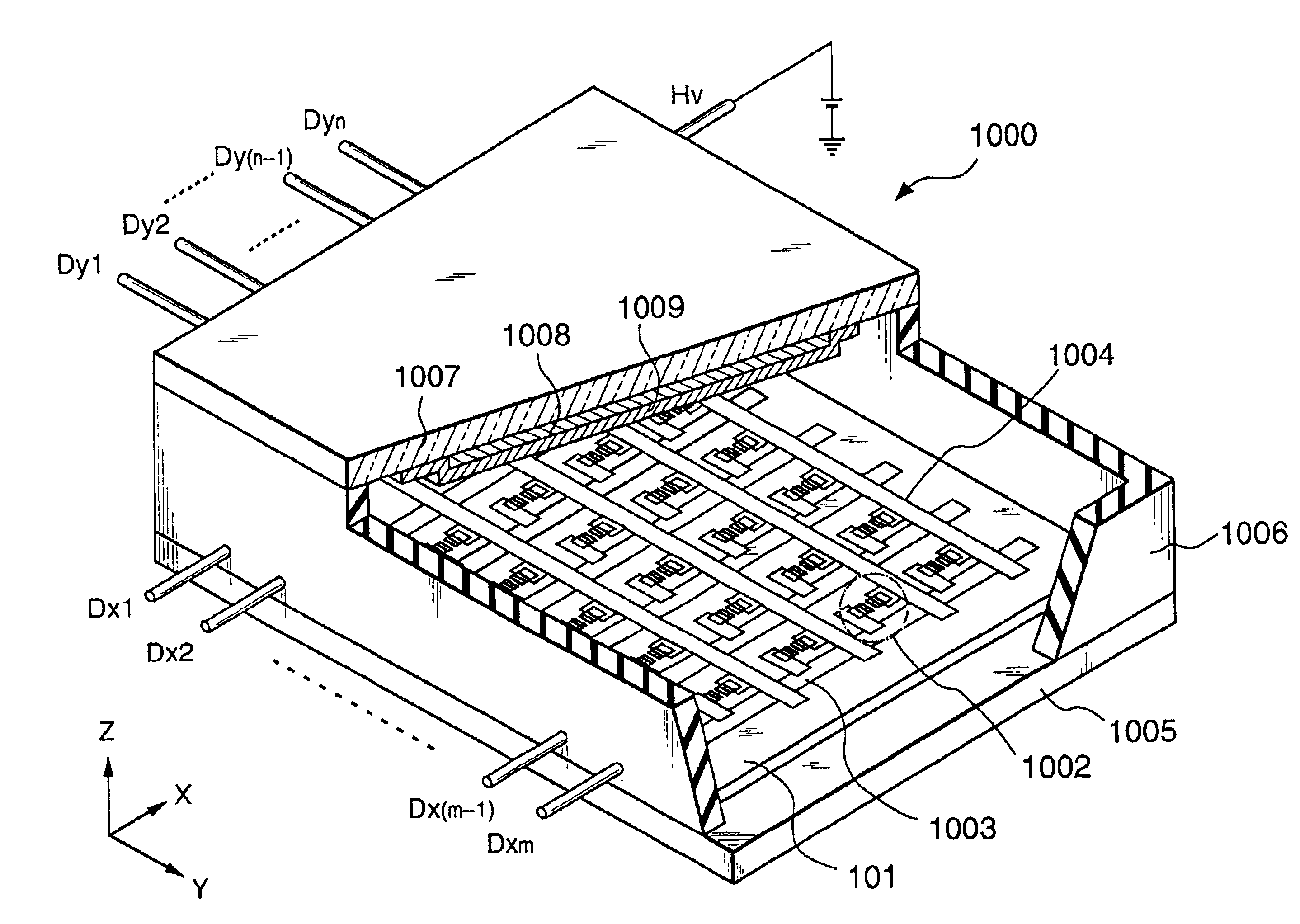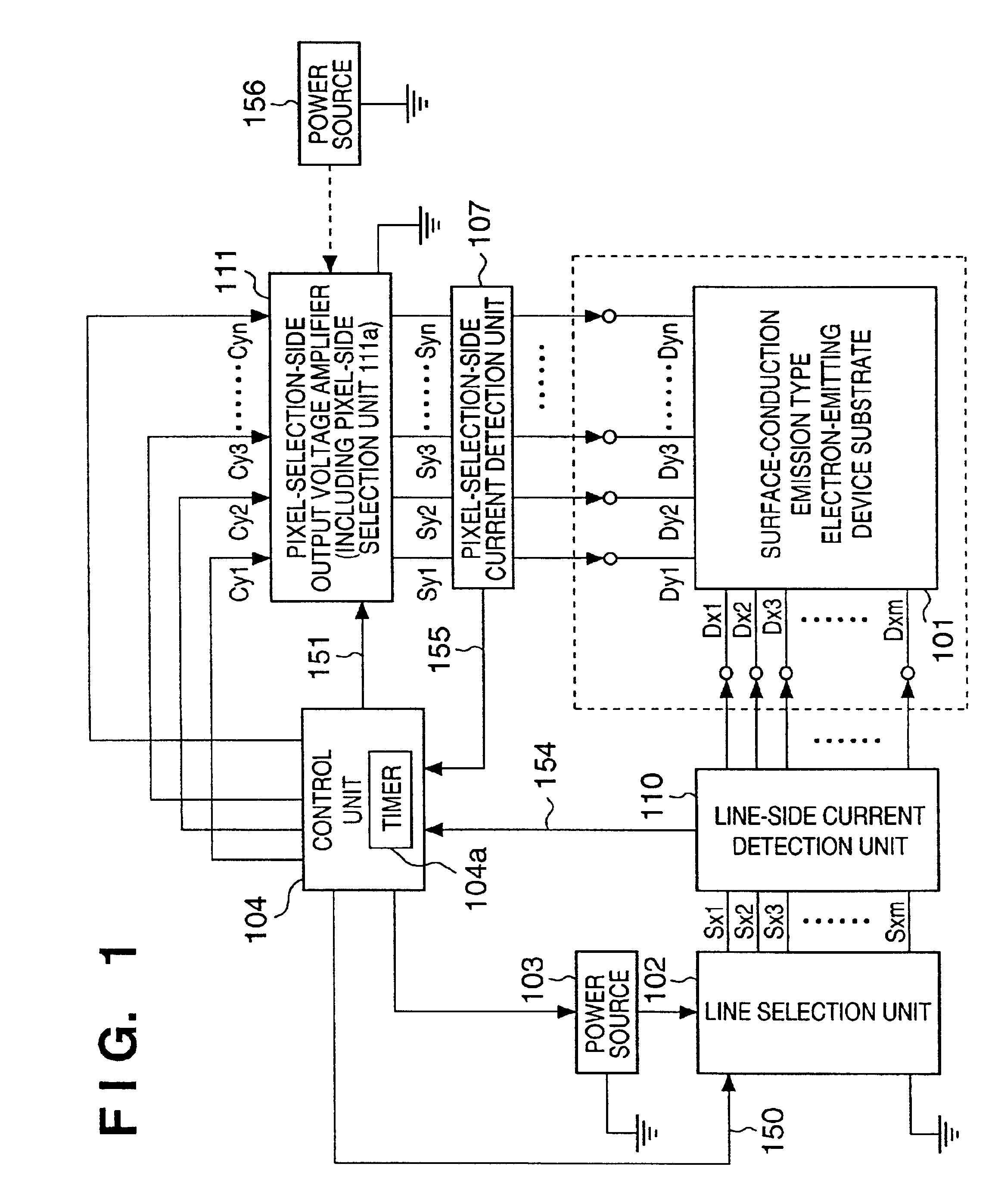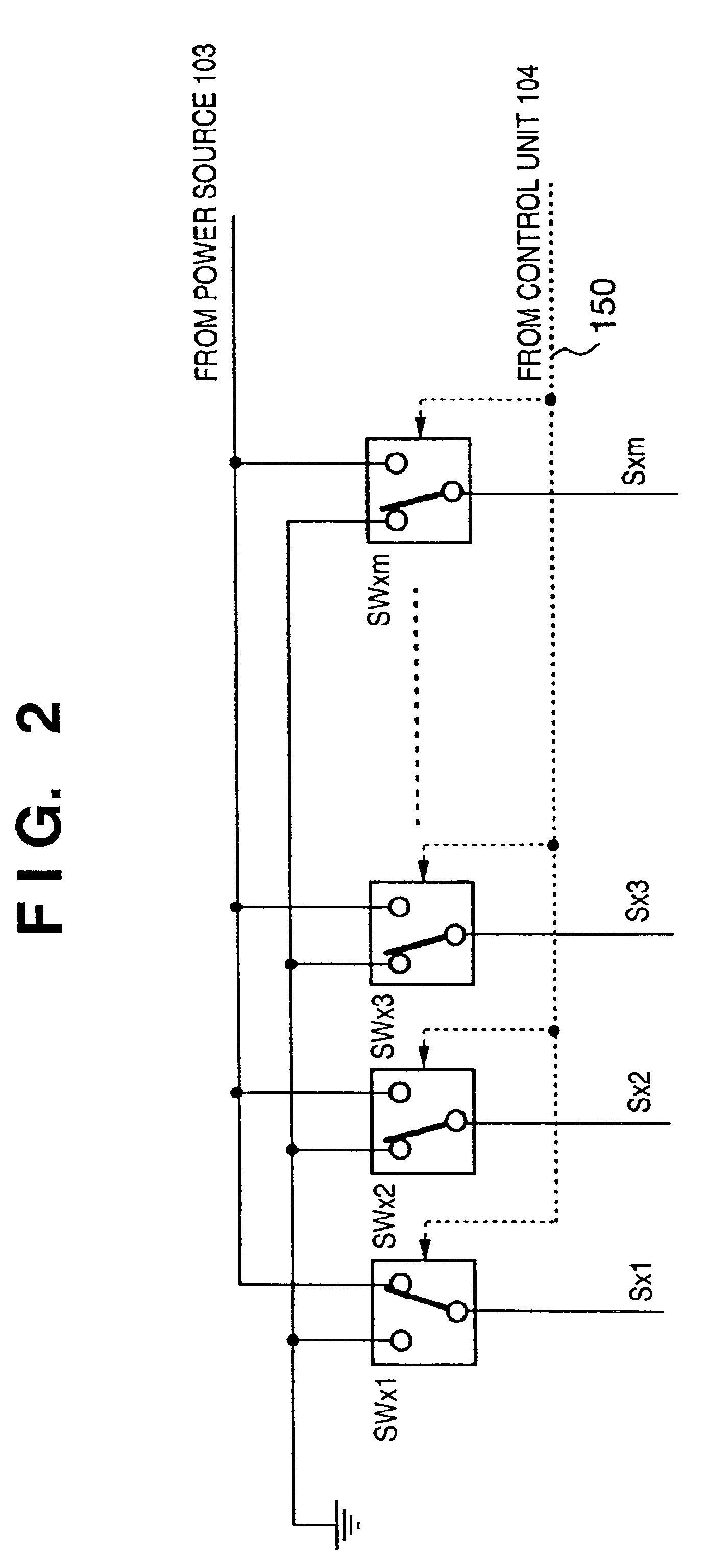Method of manufacturing electron source and image display apparatus
a technology of electron source and image display, which is applied in the manufacture of electrode systems, tube/lamp factory adjustment, and screen, etc., can solve the problems of large voltage drop, device cannot receive a sufficient voltage, and does not exactly show the actual position and shape of the electron-emitting portion, so as to reduce the power source capacity of the apparatus, reduce the reactive current, and avoid any luminance variation
- Summary
- Abstract
- Description
- Claims
- Application Information
AI Technical Summary
Benefits of technology
Problems solved by technology
Method used
Image
Examples
first embodiment
[0083]In the first embodiment, surface-conduction type emission devices are arranged in a matrix. The low-resistance phenomenon of unselected devices that occurs in activating devices while compensating for a voltage drop caused by the wiring resistance is detected on the whole matrix. When the low-resistance phenomenon of devices is observed, a resistance increase pulse is applied to all devices to activate them.
[0084]FIG. 1 is a block diagram showing an example of an activation apparatus for surface-conduction type emission devices according to the first embodiment.
[0085]In FIG. 1, reference numeral 101 denotes a multi surface-conduction type emission device (electron source)substrate (on the substrate 101 of the first embodiment, a plurality of surface-conduction type emission devices are arranged in a matrix and have already undergone forming processing). The substrate 101 is connected to an evacuation device (not shown). A vessel storing this substrate 101 is evacuated to about...
second embodiment
[0131]The second embodiment detects, in units of column wirings, the low-resistance phenomenon of unselected devices that occurs in activating devices while compensating for a voltage drop caused by wiring surface-conduction type emission devices in a matrix. When the low-resistance phenomenon of devices is detected, a resistance increase pulse is applied in units of column wirings to activate the devices.
[0132]The second embodiment according to the present invention will be described in detail.
[0133]An activation apparatus in the second embodiment has the same arrangement as in the first embodiment, and a surface-conduction type emission device is also identical to that in the first embodiment. Thus, a description of the whole apparatus arrangement will be omitted.
[0134]The second embodiment is different from the first embodiment in a method of detecting a low-resistance device among surface-conduction type emission devices and a method of applying a resistance increase pulse. In t...
third embodiment
[0150]The third embodiment detects, in units of devices, the low-resistance phenomenon of unselected devices that occurs in activating devices while compensating for a voltage drop caused by wiring surface-conduction type emission devices in a matrix. When the low-resistance phenomenon of devices is detected in units of devices, a resistance increase pulse is applied in units of devices to activate them.
[0151]The third embodiment according to the present invention will be described in detail.
[0152]An activation apparatus in the third embodiment has the same arrangement as in the first embodiment, and a surface-conduction type emission device substrate is also identical to that in the first embodiment. Thus, a description of the whole apparatus arrangement will be omitted.
[0153]The third embodiment is different from the first embodiment in a method of detecting a low-resistance device among surface-conduction type emission devices and a method of applying a resistance increase pulse....
PUM
 Login to View More
Login to View More Abstract
Description
Claims
Application Information
 Login to View More
Login to View More - R&D
- Intellectual Property
- Life Sciences
- Materials
- Tech Scout
- Unparalleled Data Quality
- Higher Quality Content
- 60% Fewer Hallucinations
Browse by: Latest US Patents, China's latest patents, Technical Efficacy Thesaurus, Application Domain, Technology Topic, Popular Technical Reports.
© 2025 PatSnap. All rights reserved.Legal|Privacy policy|Modern Slavery Act Transparency Statement|Sitemap|About US| Contact US: help@patsnap.com



